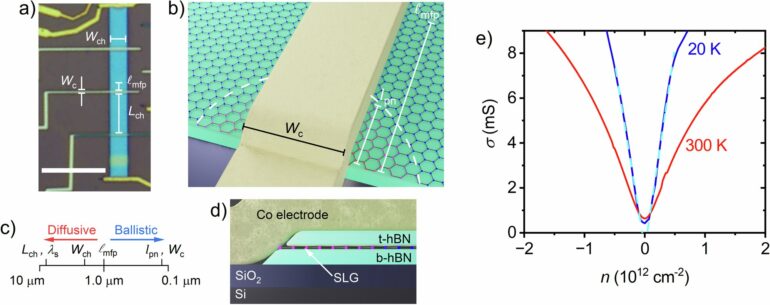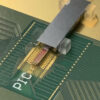Researchers at the National Graphene Institute at the University of Manchester have achieved a significant milestone in the field of quantum electronics with their latest study on spin injection in graphene. The paper, published recently in Communications Materials, outlines advancements in spintronics and quantum transport.
Spin transport electronics, or spintronics, represents a revolutionary alternative to traditional electronics by utilizing the spin of electrons rather than their charge to transfer and store information. This method promises energy-efficient and high-speed solutions that exceed the limitations of classical computation, for next generation classical and quantum computation.
The Manchester team, led by Dr. Ivan Vera-Marun, has fully encapsulated monolayer graphene in hexagonal boron nitride, an insulating and atomically flat 2D material, to protect its high quality. By engineering the 2D material stack to expose only the edges of graphene, and laying magnetic nanowire electrodes over the stack, they successfully form one-dimensional (1D) contacts.
Quantum behavior and ballistic transport
The study explores the injection process via these 1D contacts at low temperatures (20 K), revealing that electron transport across the interface is quantum in nature. The contacts act as quantum point contacts (QPCs), commonly used in quantum nanotechnology and metrology.
First author of the paper, Dr. Daniel Burrow, said, “This quantum behavior is evidenced by the measurement of quantized conductance through the contacts, indicating that the energy spectrum of electrons transforms into discrete energy subbands upon injection. By adjusting the electron density in the graphene and applying a magnetic field, we visualized these subbands and explored their connection with spin transport.”
These QPCs, formed by using magnetic nanowires, avoid the need to engineer a physical constriction within the graphene channel, which makes their implementation more practical than previous approaches.
Implications for quantum nanotechnology
The state-of-the-art device architecture developed by the Manchester team offers a straightforward method for creating tunable QPCs in graphene, overcoming fabrication challenges associated with other methods. The magnetic nature of the nanoscale contacts enables quantized spin injection, paving the way for energy-efficient devices in spin-based quantum nanotechnology.
Furthermore, the demonstration of ballistic spin injection presents an encouraging step towards the development of low-power ballistic spintronics. Future research efforts will focus on enhancing spin transport in graphene by leveraging the quantum nature of injection via the QPCs.
More information:
Daniel Burrow et al, Spin polarised quantised transport via one-dimensional nanowire-graphene contacts, Communications Materials (2025). DOI: 10.1038/s43246-025-00744-z
Provided by
University of Manchester
Citation:
Graphene’s quantum spin injection promises energy-efficient spintronics (2025, February 26)



